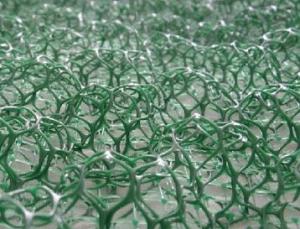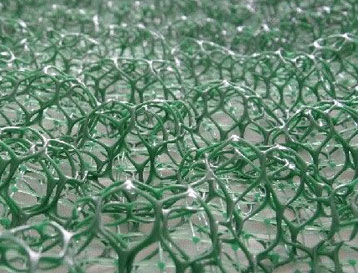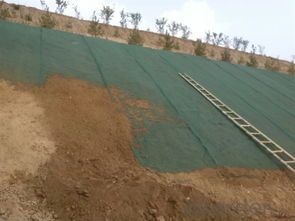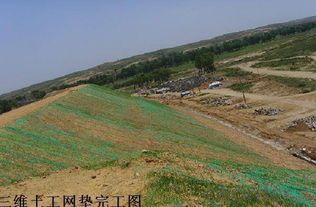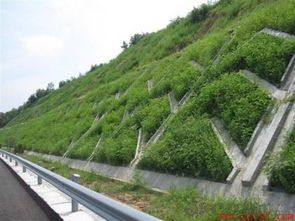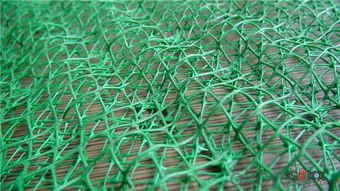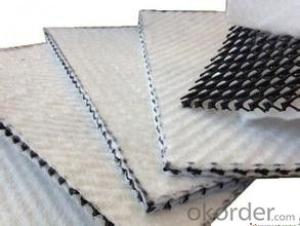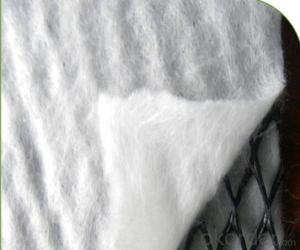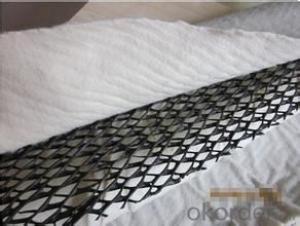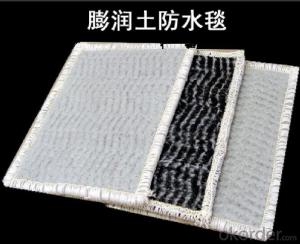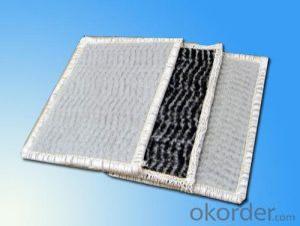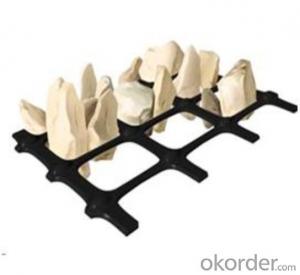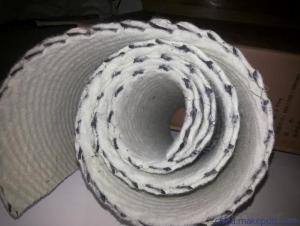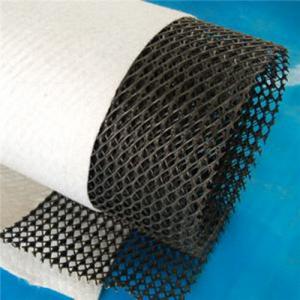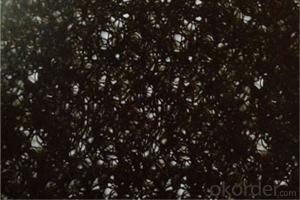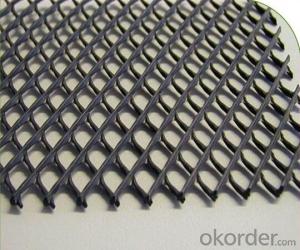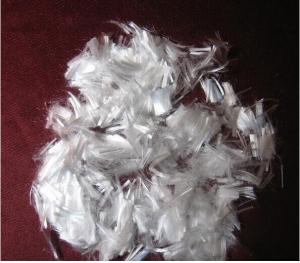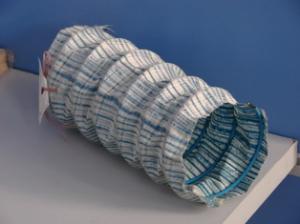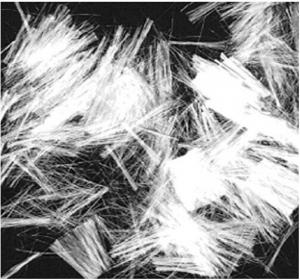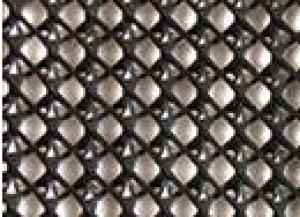Three-Dimensional Geonet Cushion Click Click
- Loading Port:
- Qingdao
- Payment Terms:
- TT OR LC
- Min Order Qty:
- 1 m²
- Supply Capability:
- 10000000 m²/month
OKorder Service Pledge
OKorder Financial Service
You Might Also Like
Three-Dimensional Geonet Cushion Click
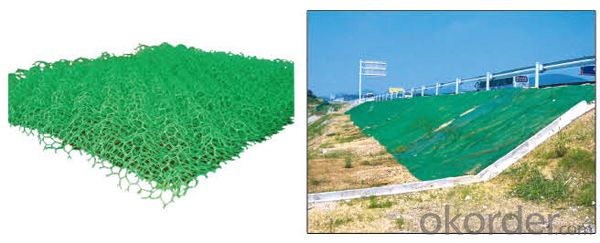
3 d geotechnical nets pad
Products overview:
Shandong yongrun plastic 3 d geotechnical nets pad is a kind of three-dimensional structure of the applicable to soil and water conservation of new geosynthetic materials, the underside is a layer or multi-layer two-way stretch or the plane nets, surface out for a layer or multilayer the stretch out the formation of a surface spot welding nets, a bump bubbly multilayer mesh structure, with more than 90% of the space with soil and grit, bottom two-way stretch nets have extended rate is low, the characteristics of the high strength, plays a role of the soil to prevent falling, the roots of the plants from the soil nets cushion in the balance, comfortable deep underground through a 0.5-2.0 meters deep, such vegetation nets pad and earth formed three a solid composite mechanical embedded system, in order to lock to protect the purpose of the slope.
Product features:
1, hold the soil is very clear role, the experiment proved, in the grass, when not before the formation of slope Angle of 45 °, 3 d geotechnical nets cushion block solid earth rate is as high as 97.5%, when for 60 ° cant, its block rate still can be as high as 84%, far wins in lattice
2, China and later, can firmly grass evenly distributed to keep slope, the wind and rain rushed from lost, ensure the lush grass and even the
3, grass grow older, and nets mat and soil formed three a solid composite mechanical embedded lock system, can prevent the heavy rain and winds hit, and rushed to withstand high water level, big flow, instead of the impact of the concrete build by laying bricks or stones, plasma PianShi as permanent protection layer
4, can dramatically reduce the construction cost, cost only for slope protection and dry concrete block stone slope protection, 1/7 of the plasma block stone 1/8 of the slope protection
5, the construction is simple, the surface level off, can the construction
6, and the use of high polymer materials and ultraviolet light stabilizers, the chemical stability, free from pollution to the environment (degradation of nets mat type two years after leaving no trace of soil again)
7, green vegetation could attract the motor vehicle exhaust, and can beautification landscape, protect the environment, green highway, railway along the route
Application:
1 and alternative concrete, asphalt, stone etc slope surface materials, mainly for the highway, railway, river, DAMS, hillside slope protection, etc
2, not long before the grass, can prevent slope surface soil erosion and grass seed was, and to facilitate the grass roots and the growth of the development
3 and plant growth of the formation of the composite plants up blanket can prevent high water flow speed of water erosion
4, can achieve rapid plant protect, mechanical seeding, effectively improve the construction efficiency and mention high plant protect green quality
5, used for cultivating industrial lawn, realizing fast green lawn commercialization
The product specification:
EM2 EM3 EM4 EM5
- Q: How are geogrids used for soil stabilization in embankment construction?
- Geogrids are used for soil stabilization in embankment construction by reinforcing and strengthening the soil structure. They are typically placed within the soil layers to provide additional tensile strength, preventing soil erosion and slope failure. The geogrids act as a barrier to lateral movement, distributing loads more evenly and increasing the overall stability of the embankment.
- Q: How do geogrids improve the load-bearing capacity of retaining walls?
- Geogrids improve the load-bearing capacity of retaining walls by providing additional reinforcement and stability to the soil. They are installed within the layers of soil behind the wall, creating a strong and interconnected system that distributes the load more effectively. This prevents excessive movement and deformation of the soil, enhancing the overall strength and stability of the wall.
- Q: Are earthwork products resistant to graffiti?
- Yes, earthwork products are typically resistant to graffiti due to their natural texture and composition.
- Q: What are the specific applications of geotextile containers in earthwork projects?
- Geotextile containers, also known as geobags or geotextile bags, have several specific applications in earthwork projects. They are commonly used for erosion control, shoreline protection, and slope stabilization. Geotextile containers are also utilized for geotechnical applications such as retaining walls, embankment construction, and land reclamation. Additionally, they are used in dewatering operations, where they act as sediment filtration systems. Overall, geotextile containers offer a versatile and effective solution for various challenges encountered in earthwork projects.
- Q: What are the different applications of geosynthetic clay liners?
- Geosynthetic clay liners (GCLs) have various applications in different industries. They are commonly used in landfill liners to provide a barrier against the migration of contaminants into the surrounding soil and groundwater. GCLs are also utilized in the construction of artificial ponds, canals, and reservoirs to prevent water seepage. Additionally, GCLs find application in the mining industry as part of the containment systems for tailings ponds, ensuring the safe storage of mining waste.
- Q: What are the advantages of using geotextile fabrics in green roof installations?
- There are several advantages of using geotextile fabrics in green roof installations. Firstly, geotextile fabrics act as a protective layer, preventing the roots of plants from penetrating the waterproof membrane beneath the green roof. This helps to prolong the lifespan of the roof and ensures it remains watertight. Secondly, geotextile fabrics provide excellent drainage capabilities. They allow excess water to drain away from the green roof, preventing waterlogging and potential damage to the plants. This helps to maintain a healthy and thriving green roof ecosystem. Additionally, geotextile fabrics can help to reduce weed growth. By acting as a barrier, they prevent weed seeds from reaching the growing media and taking root. This reduces the need for herbicides and manual weeding, making the maintenance of the green roof easier and more sustainable. Lastly, geotextile fabrics can improve the overall stability of the green roof system. They help to distribute the weight of the growing media and plants evenly, reducing the risk of erosion and soil movement. This is particularly beneficial in areas with steep slopes or high wind exposure. Overall, the use of geotextile fabrics in green roof installations offers numerous advantages, including protection, drainage, weed control, and improved stability.
- Q: What is the difficulty of civil engineering materials?
- The physical properties of each material, chemical properties, appearance characteristics, are in need of contact can learn good, many schools do not have this condition ah. The test is costly. Expensive equipment
- Q: What are the different patterns available in earthwork products?
- There are several different patterns available in earthwork products, including but not limited to, herringbone, basket weave, running bond, and random patterns. These patterns can add visual interest and variety to outdoor spaces and are often used in paving, landscaping, and construction projects.
- Q: How do earthwork products contribute to noise reduction?
- Earthwork products such as berms, mounds, and retaining walls can contribute to noise reduction by acting as physical barriers that absorb and block sound waves. These structures have the ability to deflect and redirect noise, reducing its intensity and preventing it from traveling further. Additionally, the use of earthwork materials like soil and vegetation can help in absorbing sound, further enhancing the noise reduction effect.
- Q: What are the advantages of using geosynthetic liners in agricultural applications?
- Geosynthetic liners offer several advantages in agricultural applications. Firstly, they provide an effective barrier against contaminants, preventing the leaching of harmful substances into the soil and groundwater. This helps to protect the environment and maintain the quality of surrounding ecosystems. Secondly, these liners minimize soil erosion and nutrient loss by acting as a stabilizing layer, ensuring that valuable soil and nutrients remain in place for crop growth. Additionally, geosynthetic liners aid in water management, allowing for efficient irrigation and reducing water wastage. Overall, the use of geosynthetic liners in agriculture promotes sustainability, enhances crop productivity, and safeguards natural resources.
Send your message to us
Three-Dimensional Geonet Cushion Click Click
- Loading Port:
- Qingdao
- Payment Terms:
- TT OR LC
- Min Order Qty:
- 1 m²
- Supply Capability:
- 10000000 m²/month
OKorder Service Pledge
OKorder Financial Service
Similar products
Hot products
Hot Searches
Related keywords
